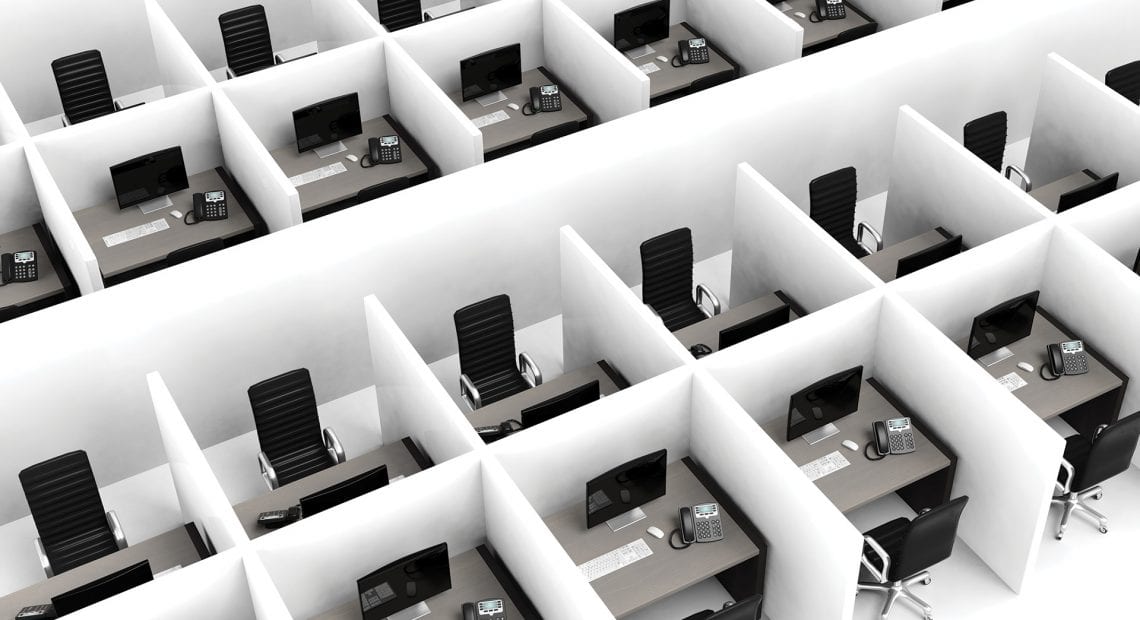Views from a Distance

In the middle of March, employees of companies across Massachusetts — and many other regions of the U.S. — suddenly began working at home. In some cases, it was a matter of setting up a team of four or five people in their home offices.
Then there’s MassMutual, which suddenly had to do that for 7,500 employees.
“We communicated the transition on a Thursday, and by Monday, we had gone from about 20% of our workforce being remote to more than 95%,” said Susan Cicco, MassMutual’s head of Human Resources & Employee Experience. “On top of the need for that speed and agility, this particular situation created unique challenges in that employees are working remotely while, in many cases, fulfilling many additional roles — as employees, caregivers, and even teachers.”
But the experiment — if one can call it that, since the government was forcing the company’s hand — has been largely successful, to the point where, with the COVID-19 pandemic still a threat, MassMutual has told its employees to keep working remotely, at least into September.
“We decided to share with employees that we would start returning to the office no earlier than the beginning of September as we continue to focus on their health and safety, as well as allow them to be able to plan family and life commitments amidst continued uncertainty around things like childcare and camps,” Cicco told BusinessWest. “I’m not sure anything particularly equates for the scale and magnitude of this crisis. That said, we relied on and built upon our strong cultural foundation and focus on flexibility, balance, and well-being.”
“This particular situation created unique challenges in that employees are working remotely while, in many cases, fulfilling many additional roles — as employees, caregivers, and even teachers.”
Which brings up a question many companies of all sizes are likely asking — once the pandemic is in the rear-view mirror, what have we learned about the potential of remote work in the future? And how many employees do we really need under one roof?
“I am sure that just about every business is going to be impacted both positively and negatively by this COVID-19 pandemic,” said Delcie Bean, CEO of Paragus IT. “My sincere hope is that the negative impacts are short-term and the positive impacts are long-term. In terms of those positive impacts, I think the most obvious is that many businesses learned that is it possible to conduct business remotely.”
Elaborating, he noted, “I know many companies that, ahead of the pandemic, said it wouldn’t work for them, but when push came to shove and they were forced into it, they found that it actually did work better than they could have imagined. That said, I know many businesses are finding that their technology is not well-suited for a predominately remote workforce, and therefore if they wish to make those changes permanent, they will need to make further investments in their technology platforms.”
The big takeaway, however, is that it’s possible, and the technology Bean mentions is widely available. But other questions need to be answered as well.
Lives in the Balance
One deals, quite simply, with employees’ mindset, Cicco said.
“Our colleagues have been amazingly resilient and committed through all this, and a major focus has been on ensuring we are keeping a pulse on employee well-being — physical and emotional — to provide the relevant support and resources,” she noted. “We’ve also been working to communicate continuously as things evolved — both when we had answers and, as importantly, when we didn’t.”
They learned that employees’ biggest stressor was the ability to effectively balance their work and personal lives, whether that’s caring for elderly loved ones, helping children with school, or taking time for themselves while still maintaining work commitments.

Susan Cicco says the biggest stressor for those working from home has been balancing their work and their personal lives, whether that’s caring for an elderly loved one or helping children with school.
In response, the company rolled out additional tools and resources for employees. In addition to existing benefits, time off, and leave policies, employees could access up to 80 hours of additional paid time off related to COVID-19.
“This time is not limited to those who are sick or taking care of kids or loved ones, although those circumstances apply,” Cicco said. “The intent is really to help everyone work through personal challenges that come up in dealing with the pandemic.”
To promote wellness in the home, MassMutual launched online fitness classes, webinars dedicated to dealing with stress, meditation programs, as well as virtual yoga, stretch breaks, and more.
It also expanded its Employee Assistance Program, which offers free sessions with counselors to help people through a range of needs, from managing anxiety and stress to juggling the demands of parenting, to grieving the passing of a loved one.
“And, working with our eight Business Resource Groups, we’ve continued our commitment to diversity and inclusion,” Cicco continued, “providing a safe space for employees to share what’s on their minds and connect through online conversations on how different segments of society are impacted by the pandemic.”
If companies decide they can manage employees’ needs remotely and see no reduction in efficiency, they might indeed move in that direction permanently, at least for some workers, Bean said.
“The impact of this, or the ripple effect, is what is most interesting,” he told BusinessWest. “In talking to clients, peers, and friends, I know companies that will forever reduce their physical office space — focusing more on meeting rooms and less on offices, with the philosophy that the office is somewhere we come to collaborate or meet up, but when we are working independently, we do so from home. Changes like that will have all kinds of effects on traffic, real estate, even the carbon footprint of an organization.”
However, at the same time, businesses are starting to realize that the technology required to make this work, and to make it work securely, is different than the tech they have been investing in for the past 10 years, he explained.
“Platforms like Microsoft 365 become essential, but not just for e-mail; it is my opinion that, during this pandemic, while we were all running around applying for PPP loans and trying to learn Zoom, somewhere over in a corner, the concept of having a file server died a quick and quiet death,” he explained. “Businesses will need to move to platforms that are much more device-agnostic, where control, management, and data are decentralized and largely migrated to the cloud, and where collaboration is dramatically enhanced through tools like Microsoft Teams.”
Expanding those tools will need to be accompanied by enhanced cybersecurity at home, Bean added.
Best of Both Worlds
Taking the broad view, Bean said the potential clearly exists for more remote work and home-based employees.
“In the end, everything that is going to happen was going to happen anyway,” he noted. “However, five years was just shaved off of the schedule that was otherwise going to play out, dramatically accelerating that process.”
After all, he added, the core value of technology today is that it moves quickly — often before people are ready.
“It’s hard for anyone to truly know the future when still in the midst of something unprecedented like this,” Cicco added. “I have no doubt that this forced work-from-home experience has validated the potential of flexibility and how productive an organization can be working remotely, while, at the same time, reinforcing the importance of people coming together in the same space to achieve common goals.”
So maybe there’s room for both models.
“I am certain the learnings from all this will undoubtedly move us forward in providing the best of both worlds,” she said, “supporting employees working from home when it makes sense for them and their work, along with continuing to foster the right work environment that safely draws people together to collaborate and innovate.”
Joseph Bednar can be reached at [email protected]





